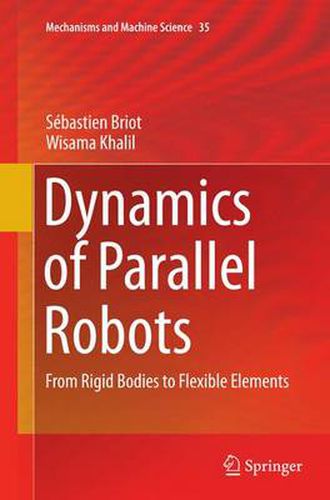Readings Newsletter
Become a Readings Member to make your shopping experience even easier.
Sign in or sign up for free!
You’re not far away from qualifying for FREE standard shipping within Australia
You’ve qualified for FREE standard shipping within Australia
The cart is loading…






This title is printed to order. This book may have been self-published. If so, we cannot guarantee the quality of the content. In the main most books will have gone through the editing process however some may not. We therefore suggest that you be aware of this before ordering this book. If in doubt check either the author or publisher’s details as we are unable to accept any returns unless they are faulty. Please contact us if you have any questions.
This book starts with a short recapitulation on basic concepts, common to any types of robots (serial, tree structure, parallel, etc.), that are also necessary for computation of the dynamic models of parallel robots. Then, as dynamics requires the use of geometry and kinematics, the general equations of geometric and kinematic models of parallel robots are given. After, it is explained that parallel robot dynamic models can be obtained by decomposing the real robot into two virtual systems: a tree-structure robot (equivalent to the robot legs for which all joints would be actuated) plus a free body corresponding to the platform. Thus, the dynamics of rigid tree-structure robots is analyzed and algorithms to obtain their dynamic models in the most compact form are given. The dynamic model of the real rigid parallel robot is obtained by closing the loops through the use of the Lagrange multipliers. The problem of the dynamic model degeneracy near singularities is treated and optimal trajectory planning for crossing singularities is proposed. Lastly, the approach is extended to flexible parallel robots and the algorithms for computing their symbolic model in the most compact form are given. All theoretical developments are validated through experiments.
$9.00 standard shipping within Australia
FREE standard shipping within Australia for orders over $100.00
Express & International shipping calculated at checkout
This title is printed to order. This book may have been self-published. If so, we cannot guarantee the quality of the content. In the main most books will have gone through the editing process however some may not. We therefore suggest that you be aware of this before ordering this book. If in doubt check either the author or publisher’s details as we are unable to accept any returns unless they are faulty. Please contact us if you have any questions.
This book starts with a short recapitulation on basic concepts, common to any types of robots (serial, tree structure, parallel, etc.), that are also necessary for computation of the dynamic models of parallel robots. Then, as dynamics requires the use of geometry and kinematics, the general equations of geometric and kinematic models of parallel robots are given. After, it is explained that parallel robot dynamic models can be obtained by decomposing the real robot into two virtual systems: a tree-structure robot (equivalent to the robot legs for which all joints would be actuated) plus a free body corresponding to the platform. Thus, the dynamics of rigid tree-structure robots is analyzed and algorithms to obtain their dynamic models in the most compact form are given. The dynamic model of the real rigid parallel robot is obtained by closing the loops through the use of the Lagrange multipliers. The problem of the dynamic model degeneracy near singularities is treated and optimal trajectory planning for crossing singularities is proposed. Lastly, the approach is extended to flexible parallel robots and the algorithms for computing their symbolic model in the most compact form are given. All theoretical developments are validated through experiments.